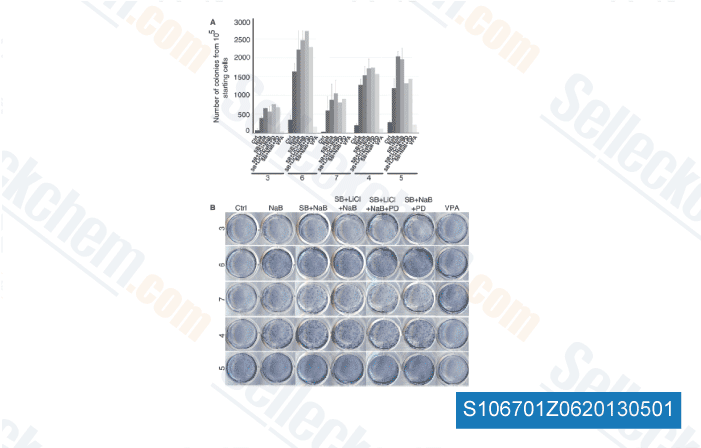Overexpression of ERF1 in Arabidopsis, a tran scription issue that activates ethylene responsive genes, enhances resistance to F. oxysporum f. sp. conglutinans and f. sp. lycopersici. Mutations that lead to ethylene insensitivity make tobacco and Arabidopsis even more prone to a number of formae speciales of F. oxysporum. These scientific studies demonstrate that the ethylene signaling pathway is vital for resist ance to fusarium wilt in people plants. In our study, sev eral ERF like genes had been discovered to get strongly induced in 1 two days following infection by the two Foc1 and Foc4 TR4, which could boost the ethylene response pathway. Because of the problems in using conventional breed ing for banana improvement, molecular biotechnology presents fantastic hope for enhancing banana for enhanced illness resistance and for other agronomically significant traits by overcoming the constrains imposed from the ster ility of cultivated banana.
A gene conferring a dominant resistance trait, such as being a banana I like R gene which could activate banana resistance towards Foc TR4 or other genes that inhibitor confer a broad spectrum resistance are going to be notably helpful in genetic engineering of banana for enhanced resistance. The availability on the genome se quences of banana and numerous Foc races, at the same time since the transcriptomes and international gene expression profiles, are very handy in potential research towards knowing the molecular mechanism mediating resistance to fusarium wilt disease. Conclusion one. By way of the examination of your transcriptome information obtained by RNA seq, we identified at the very least 842 putative banana genes which have not previously been annotated.
The analysis also led towards the identifi cation of a substantial variety of SNPs and indels from the banana genes. two. No obvious distinction was discovered during the early infection course of action amongst Foc1 and Foc TR4 infected roots, and each races had been noticed to invade vascular tissues of banana roots. The worldwide gene ex pression patterns influenced by infection of Foc1 and Foc notch inhibitors TR4 had been also really comparable. The results indicate the variation within the Cavendish cultivars suscep tibility to these two races could possibly be due to hosts re sponses all through later infection processes. three. Foc infection induced expression of many genes frequently responsive to infection by other pathogenic microorganisms, together with PR genes, the genes concerned in synthesis of phytoalexins and phenolpropanoids and cell wall strengthening.
four. Various genes involved in ethylene biosynthesis and signaling pathways are between the strongly induced genes by Foc infection, suggesting involvement of this hormone during the banana response to the infection. Methods Plant supplies The banana cultivar utilized in this review is the Cavendish subgroup with theMusa AAA genome. Banana plantlets were propagated under  a sterile tissue culture affliction.
a sterile tissue culture affliction.
Cd Antigens
The CD4 and CD8 antigens are coupled to a protein-tyrosine kinase (p56lck) that phosphorylates the CD3 complex.
